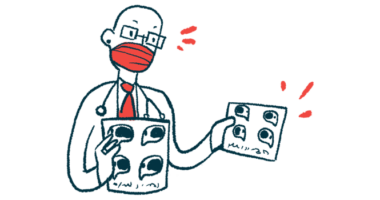Ketoconazole Helps Control Cortisol in Hard-to-treat Cushing’s: Study
75% of treated patients had some reduction in cortisol levels

Ketoconazole can effectively control high cortisol levels in most patients with active Cushing’s disease for whom surgery is not an effective option, researchers in Brazil report.
It “proved to be an effective and safe alternative for [Cushing’s disease] treatment” for 66% of patients at an outpatient clinic of a Brazilian university hospital. Medications to control cortisol are often used in patients whose cortisol levels fail to drop after curative surgery, when surgery is not possible, or to control symptoms until surgery can be performed.
Findings were reported in the study “Evaluation of ketoconazole as a treatment for Cushing’s disease in a retrospective cohort,” which was published in the journal Frontiers in Endocrinology.
In the majority of Cushing’s disease patients, a benign tumor in the brain’s pituitary gland is the cause of the condition. Such tumors elicit the excessive production of adrenocorticotropic hormone, which signals the adrenal glands sitting atop the kidneys to produce and release large amounts of cortisol, a condition known as hypercortisolism.
Transsphenoidal surgery (performed through the nose and sphenoid sinus) to remove pituitary tumors is the first-line treatment for patients diagnosed with Cushing’s. It is estimated that 60%–80% of the patients who undergo the procedure achieve short-term disease remission, meaning low cortisol levels after surgery.
However, disease recurrence occurs in 20%–30% of the cases in the long term, despite initial remission. In such cases, as well as in patients who fail to achieve remission initially, or in whom surgery is not possible, certain medications can be used to control excessive cortisol levels.
What is ketoconazole?
One such therapy is ketoconazole (sold as Nizoral, among other brand names), an anti-fungal medication that can lower cortisol levels and is used off-label in the U.S. to treat Cushing’s disease. In Europe, it has been approved for this indication, and sold under the brand name Ketoconazole HRA.
In the new study, a team of researchers assessed the safety and clinical response to ketoconazole in a group of Cushing’s disease patients being treated at an outpatient clinic in Brazil.
The team evaluated a total of 38 patients whose treatment included ketoconazole (100–1,200 mg per day) during any period between 2004 and 2020. From these, 33 patients had complete data and were considered for further analysis.
Most patients were female (84.2%) and white (89.5%), and had a mean age at diagnosis of 31.7 years. Ketoconazole treatment duration ranged from 14 days to 14.5 years.
Ketoconazole was used after transsphenoidal surgery in 26 (78%) patients. From these, 20 achieved a complete response, two had a partial response, and four did not respond to the medication.
In the seven patients for whom surgery was not possible, ketoconazole was the first-line of treatment. In this group, two patients showed a complete response to reducing cortisol levels, one had a partial response, and four did not respond to the medication. After initial treatment with ketoconazole, four patients underwent transsphenoidal surgery, and three continued taking the medication.
In total, 75% of the patients treated with ketoconazole had at least some reduction in cortisol levels. This data indicates “a clear trend towards improvement in hypercortisolism,” according to the researchers.
Patients with cortisol levels totally or partially controlled with ketoconazole had lower baseline 24-hour urinary-free cortisol levels than those with uncontrolled cortisol levels (0.62 vs. 5.3 times above the upper normal limit).
About 88% patients with total or partial control of cortisol levels underwent pituitary surgery, whereas 50% of those with uncontrolled cortisol levels underwent the procedure.
The prevalence of patients with uncontrolled cortisol levels remained stable over time (around 30%), even when ketoconazole doses were adjusted or other medications were used. For instance, the combination of cabergoline with ketoconazole was not effective, with two of the nine patients experiencing normalized urine cortisol levels.
When ketoconazole was used with radiotherapy (eight patients), cortisol levels were normalized in 75% of the cases, “a finding that reinforces the use of this therapeutic combination, especially in cases that are more resistant to different treatment modalities,” the researchers wrote.
Mild adverse effects were described in 10 (30%) patients, including nausea, vomiting, dizziness, and loss of appetite. Four patients experienced serious adverse effects, including acute liver problems, and had to discontinue treatment. Hypokalemia, or low potassium levels, was seen in 10 patients, who were treated with oral potassium supplementation or spironolactone. Worsening of hypertension (high blood pressure) was also among the secondary effects reported.
“We found side effects that have been rarely described in the literature, including hypokalemia and worsening hypertension, which require specific care and management,” the researchers wrote, concluding that “ketoconazole is an effective alternative for [Cushing’s disease] patients who cannot undergo surgery, who do not achieve remission after pituitary surgery, or who have recurrent hypercortisolism.”








